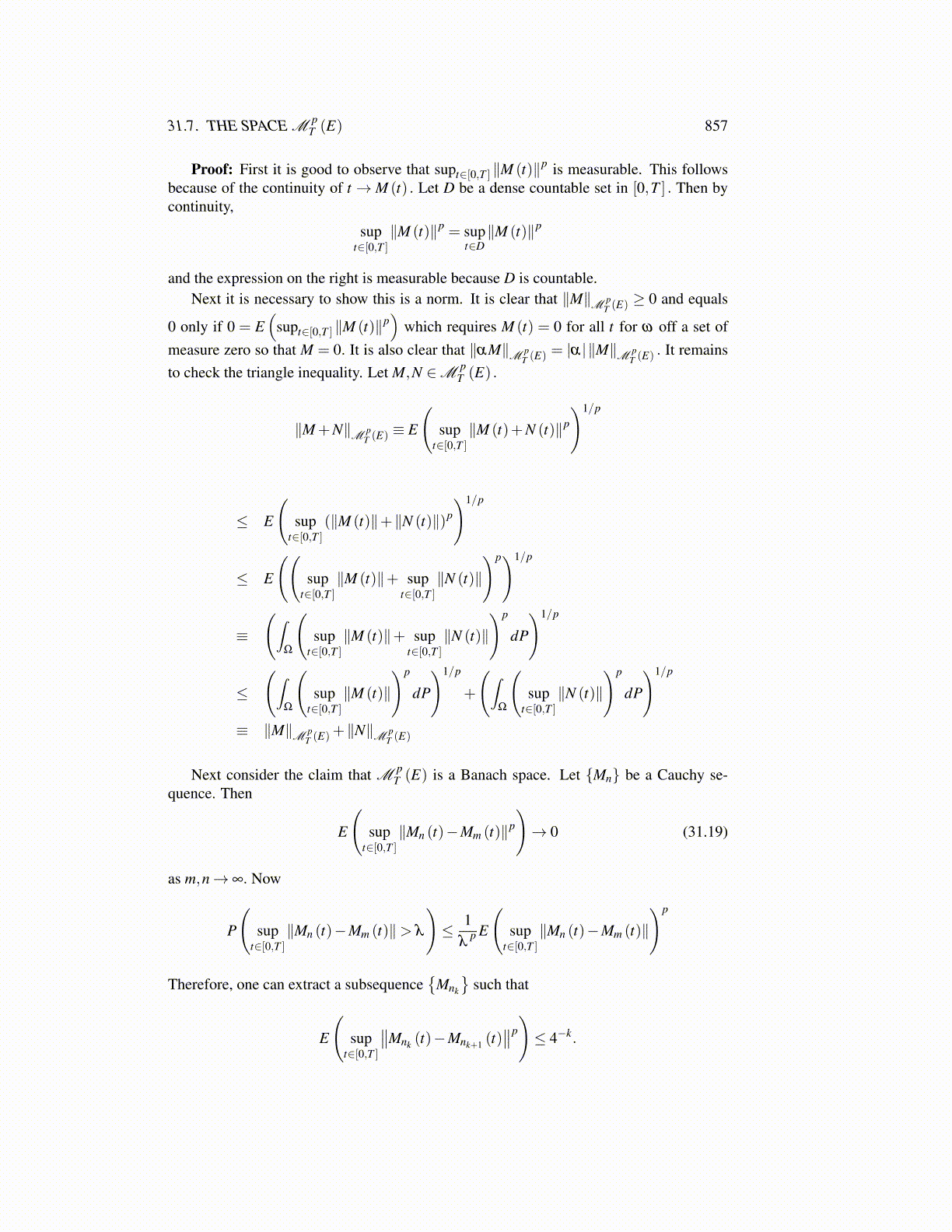
31.7. THE SPACE M pT (E) 857
Proof: First it is good to observe that supt∈[0,T ] ∥M (t)∥p is measurable. This followsbecause of the continuity of t →M (t) . Let D be a dense countable set in [0,T ] . Then bycontinuity,
supt∈[0,T ]
∥M (t)∥p = supt∈D∥M (t)∥p
and the expression on the right is measurable because D is countable.Next it is necessary to show this is a norm. It is clear that ∥M∥M p
T (E) ≥ 0 and equals
0 only if 0 = E(
supt∈[0,T ] ∥M (t)∥p)
which requires M (t) = 0 for all t for ω off a set ofmeasure zero so that M = 0. It is also clear that ∥αM∥M p
T (E) = |α|∥M∥M pT (E) . It remains
to check the triangle inequality. Let M,N ∈M pT (E) .
∥M+N∥M pT (E) ≡ E
(sup
t∈[0,T ]∥M (t)+N (t)∥p
)1/p
≤ E
(sup
t∈[0,T ](∥M (t)∥+∥N (t)∥)p
)1/p
≤ E
((sup
t∈[0,T ]∥M (t)∥+ sup
t∈[0,T ]∥N (t)∥
)p)1/p
≡
(∫Ω
(sup
t∈[0,T ]∥M (t)∥+ sup
t∈[0,T ]∥N (t)∥
)p
dP
)1/p
≤
(∫Ω
(sup
t∈[0,T ]∥M (t)∥
)p
dP
)1/p
+
(∫Ω
(sup
t∈[0,T ]∥N (t)∥
)p
dP
)1/p
≡ ∥M∥M pT (E)+∥N∥M p
T (E)
Next consider the claim that M pT (E) is a Banach space. Let {Mn} be a Cauchy se-
quence. Then
E
(sup
t∈[0,T ]∥Mn (t)−Mm (t)∥p
)→ 0 (31.19)
as m,n→ ∞. Now
P
(sup
t∈[0,T ]∥Mn (t)−Mm (t)∥> λ
)≤ 1
λp E
(sup
t∈[0,T ]∥Mn (t)−Mm (t)∥
)p
Therefore, one can extract a subsequence{
Mnk
}such that
E
(sup
t∈[0,T ]
∥∥Mnk (t)−Mnk+1 (t)∥∥p
)≤ 4−k.